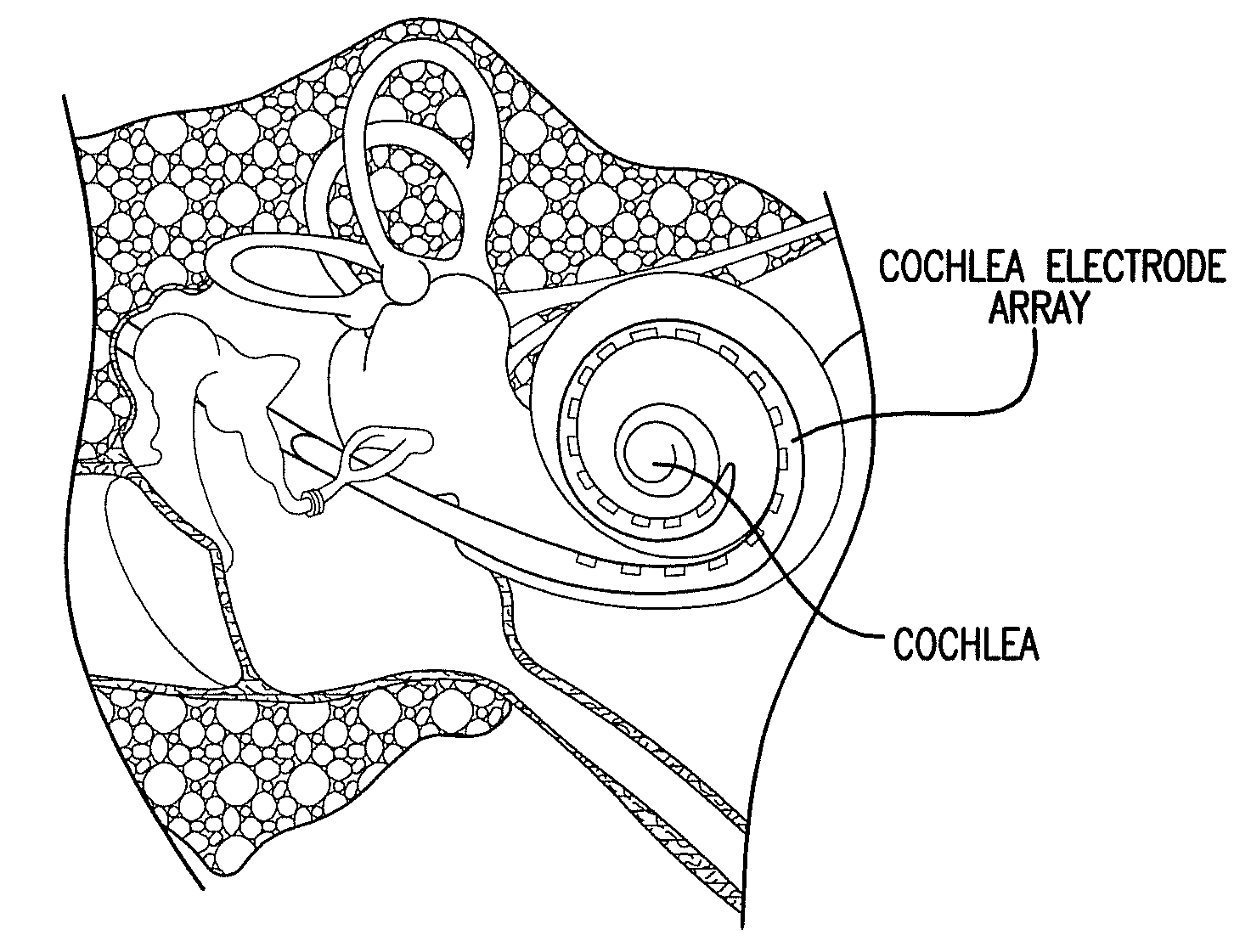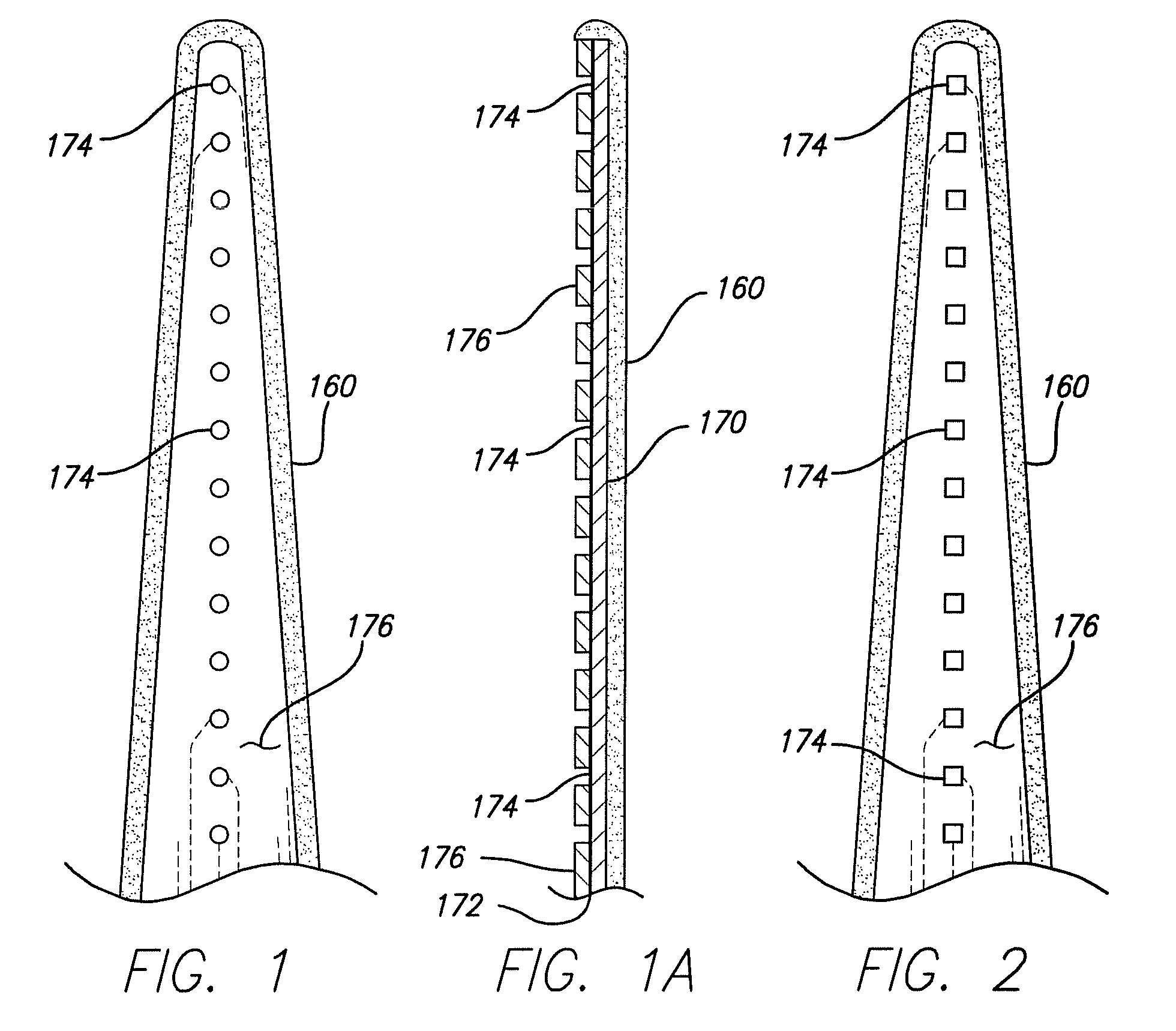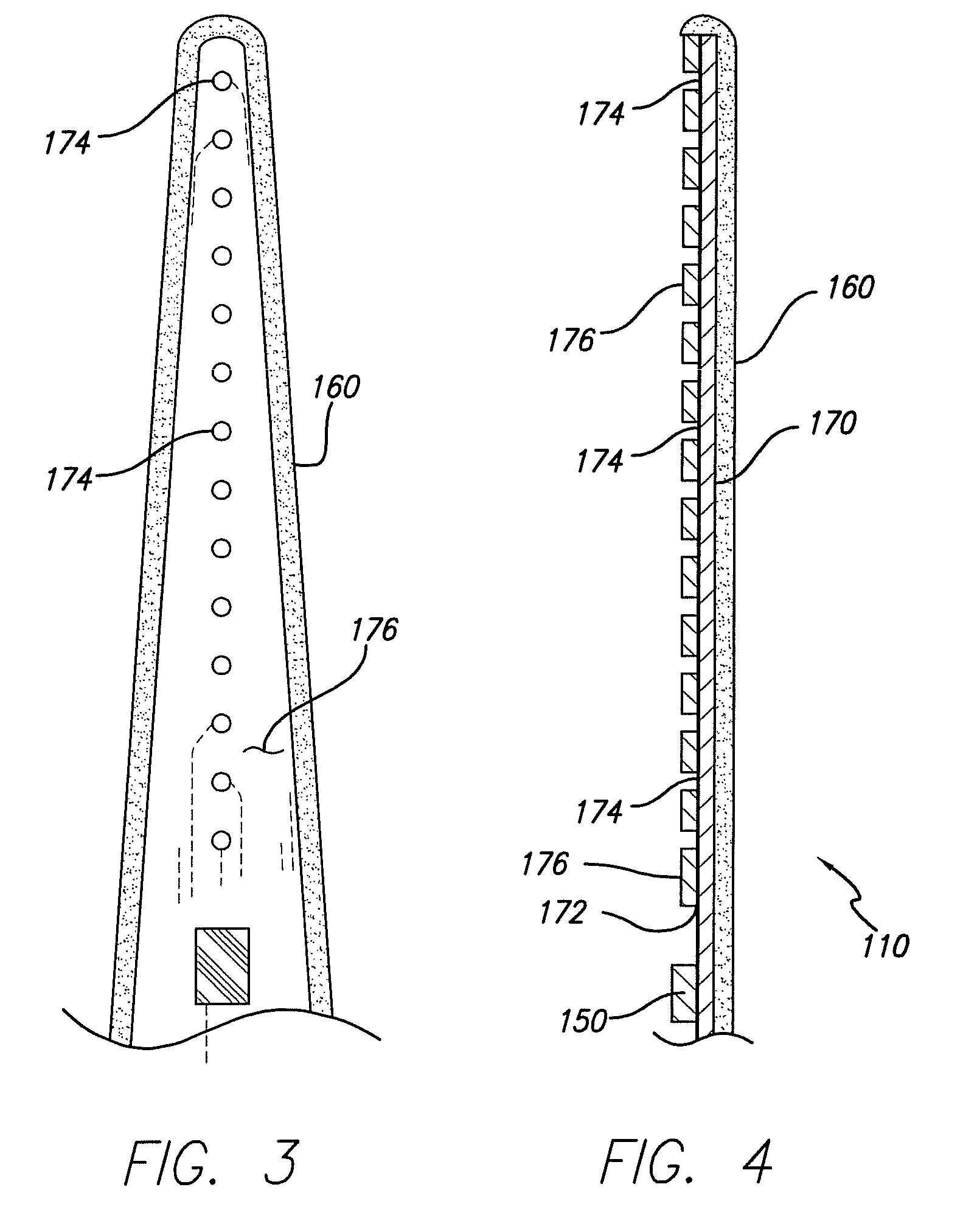Cochlear Stimulation Device
a cochlear stimulation and electrode technology, applied in the direction of head electrodes, internal electrodes, therapy, etc., can solve the problems of degrading the electrode, affecting the performance of the electrode, and affecting the conductivity of the electrode, so as to achieve the effect of small width and stable conductivity
- Summary
- Abstract
- Description
- Claims
- Application Information
AI Technical Summary
Benefits of technology
Problems solved by technology
Method used
Image
Examples
Embodiment Construction
[0043]Polymer materials are useful as electrode array bodies for neural stimulation. They are particularly useful for retinal stimulation to create artificial vision, cochlear stimulation to create artificial hearing, or cortical stimulation for many purposes. Regardless of which polymer is used, the basic construction method is the same. A layer of polymer is laid down, commonly by some form of chemical vapor deposition, spinning, meniscus coating or casting. A layer of metal, preferably platinum, is applied to the polymer and patterned to create electrodes and leads for those electrodes. Patterning is commonly done by photolithographic methods. A second layer of polymer is applied over the metal layer and patterned to leave openings for the electrodes, or openings are created later by means such as laser ablation. Hence the array and its supply cable are formed of a single body. Alternatively, multiple alternating layers of metal and polymer may be applied to obtain more metal tra...
PUM
 Login to View More
Login to View More Abstract
Description
Claims
Application Information
 Login to View More
Login to View More - R&D
- Intellectual Property
- Life Sciences
- Materials
- Tech Scout
- Unparalleled Data Quality
- Higher Quality Content
- 60% Fewer Hallucinations
Browse by: Latest US Patents, China's latest patents, Technical Efficacy Thesaurus, Application Domain, Technology Topic, Popular Technical Reports.
© 2025 PatSnap. All rights reserved.Legal|Privacy policy|Modern Slavery Act Transparency Statement|Sitemap|About US| Contact US: help@patsnap.com



